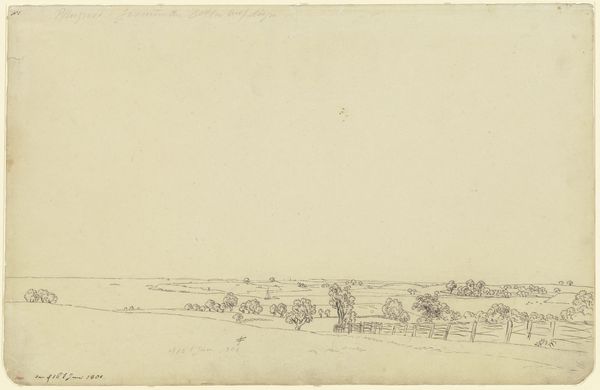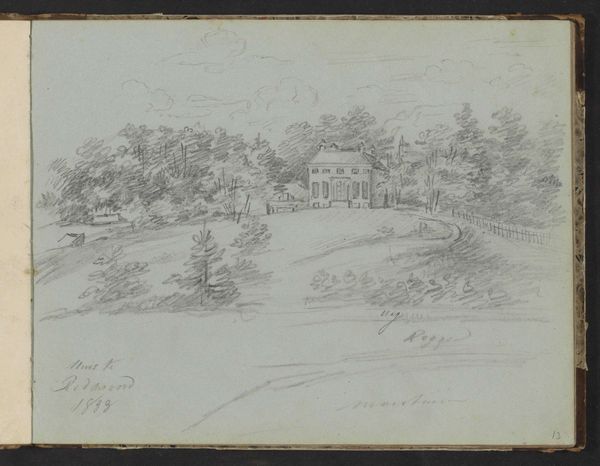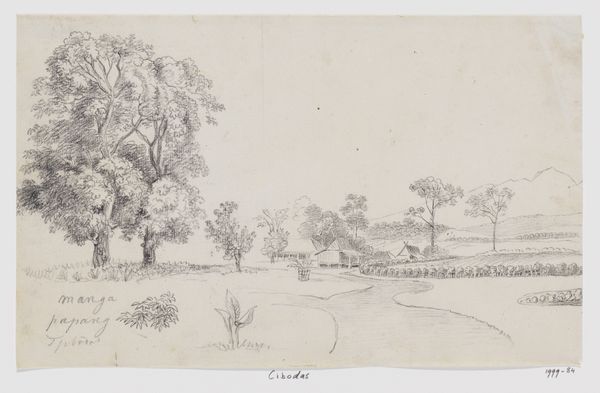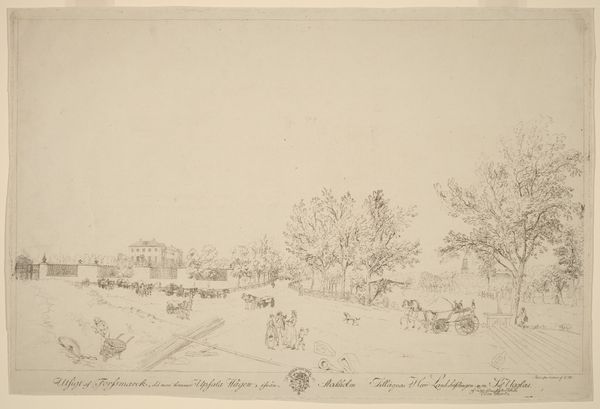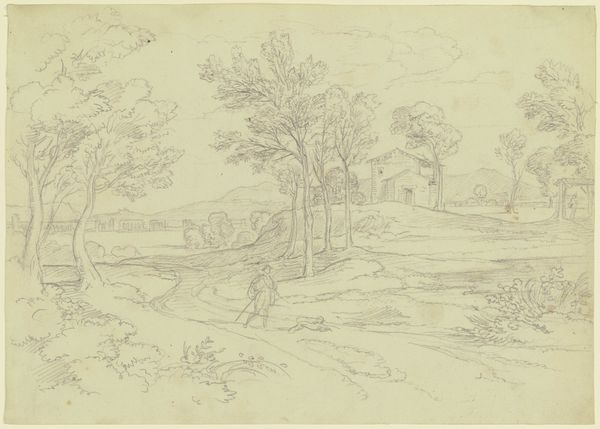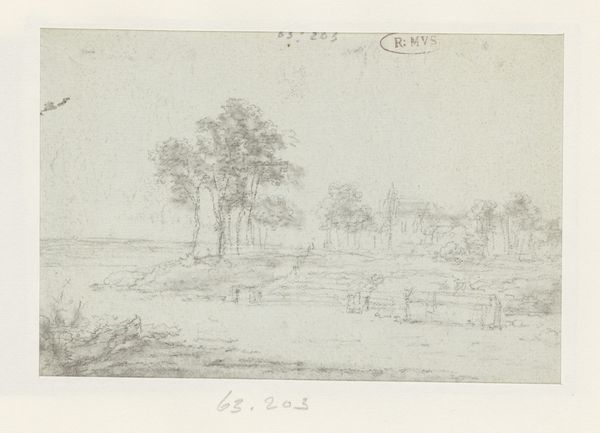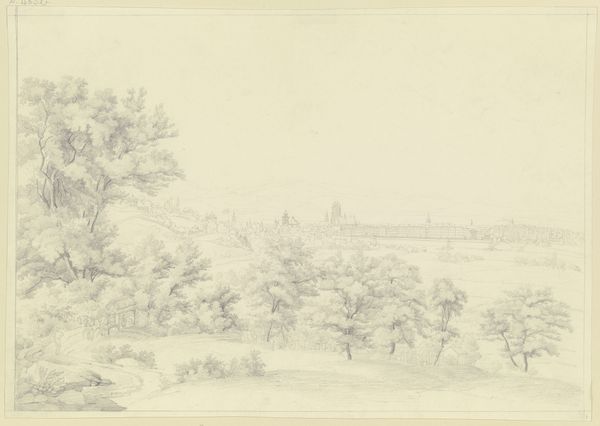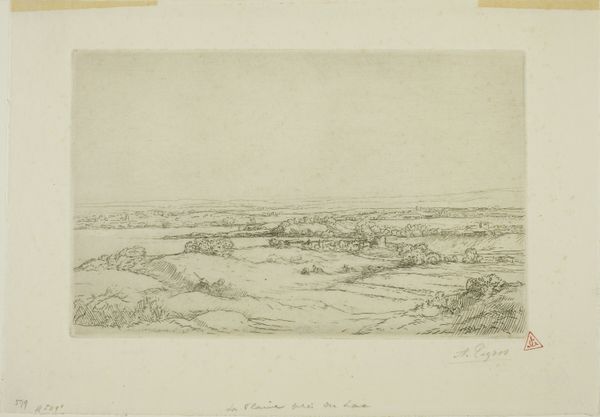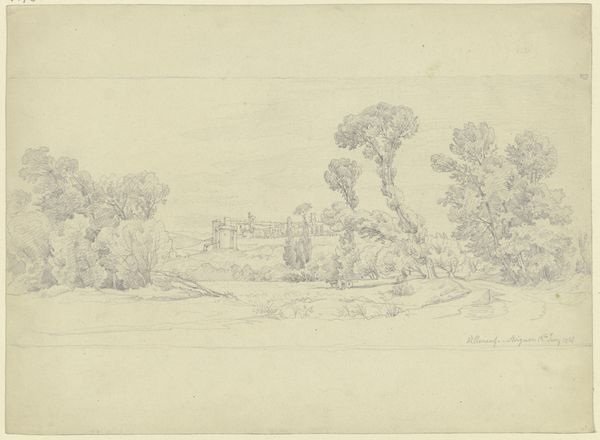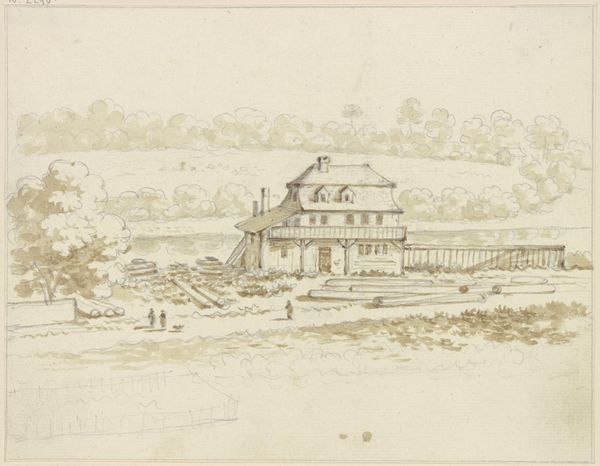
drawing, paper, pencil, architecture
#
drawing
#
landscape
#
paper
#
pencil
#
architecture
Copyright: Public Domain
Curator: We're looking at Friedrich Metz's "Landschaft, im Hintergrund die Villa Borghese," a pencil drawing on paper completed around 1851 and currently housed in the Städel Museum. Editor: It has a certain calm to it, a simplicity achieved through very delicate pencil work. There's a stillness in the open field. You can feel the artist capturing a very particular moment in time. Curator: It certainly represents the sensibilities of its time. Think about the Grand Tour, the significance of Rome, and how artists sought to document its blend of ancient history and evolving modernity. The Villa Borghese, with its gardens, would have been a focal point. Editor: The texture of the paper becomes important, doesn't it? You can see where the pencil is layered. What I find intriguing is how the bare paper suggests atmosphere—a hazy Roman light. It shows us that even seemingly simple materials, pencil and paper, possess their own intrinsic properties and capacity for expression. Curator: That’s right. Also think about the social context: how travel and the availability of paper and pencils empowered artists to sketch en plein air, capturing these immediate impressions of landscape and architecture that later informed larger studio paintings. Editor: It brings to mind questions about the value assigned to sketches like these. Were they preparatory tools? Finished pieces? Today, we appreciate them for the direct link to the artist's process, a glimpse into their way of seeing. Curator: Indeed. What appears straightforward—a quick pencil sketch—is laden with historical, social, and material significance, reflecting the culture that produced both the artwork and its appreciation. Editor: Absolutely. This drawing prompts us to think about not just the subject—the villa and landscape—but also the very act of making, the artist's hand, and the role these seemingly minor works play in the broader art world. Curator: A worthy reminder of how a journey to document art becomes its own enduring piece. Editor: Right. The material rendering becomes part of history, just like the building it depicts.
Comments
No comments
Be the first to comment and join the conversation on the ultimate creative platform.

